I custom-designed MySwear shoes on Farfetch! Seoul, Korea dog cafe & Myeongdong Kpop shops.

Happy holidays! Tis the season to see friends and family, but don’t forget to take a moment to treat yourself too.
I got an early “me to me” gift… these show-stopping MySwear shoes, which I designed myself!

Farfetch has a neat new service that lets you customize your own sneakers online, using 3D modeling. I’ll show you how I did it, in this outfit post…

… and take you inside the dog cafe in Seoul, Korea: where you can pet puppies of all breeds. Be sure to read until the end, for some Kpop shopping tips too.

I’m thrilled with how my metallic bespoke shoes turned out. I got to choose from 16 unisex silhouettes, and then customize every single aspect: color, materials, laces, and more.
There’s even the option to add a personal monogram. I think these shiny, retro, red-purple Wizard of Oz shoes can only belong to “L.C.” (La Carmina)!

I picked the metallic fuchsia color because it matches my hair color.
These designer shoes are a way to add color and fun to a black-and-white outfit. (I’m wearing a combination of old favorites: a leather jacket from Canada, top from Japan, and leggings from Hong Kong.)

I love how these MySwear shoes are “100% me”, thanks to the complete customization.
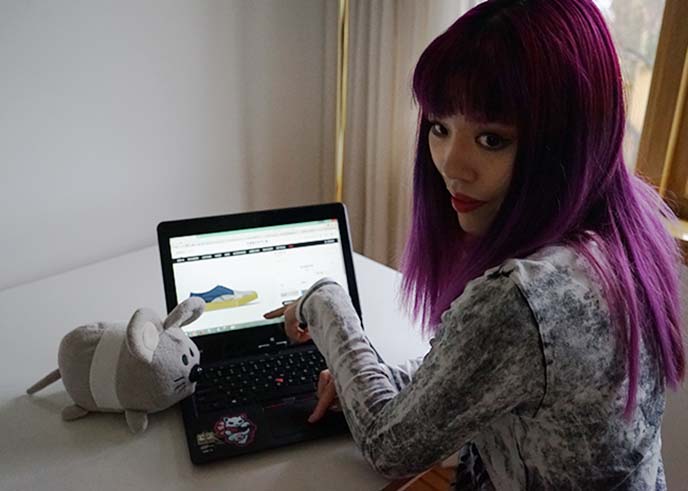
My mouse-friend and I had a lot of fun designing my shoes. We went to the MySwear site, and selected a footwear style.
(I went with the minimalist, pointed-toe Hoxton — but you can select platform sneakers, creepers and more).

Right on the screen, you can play around with different materials (python, suede, ostrich), color combinations (side, front, panel), soles, and decorations (a metal toe cap, velvet stripe, monogram).
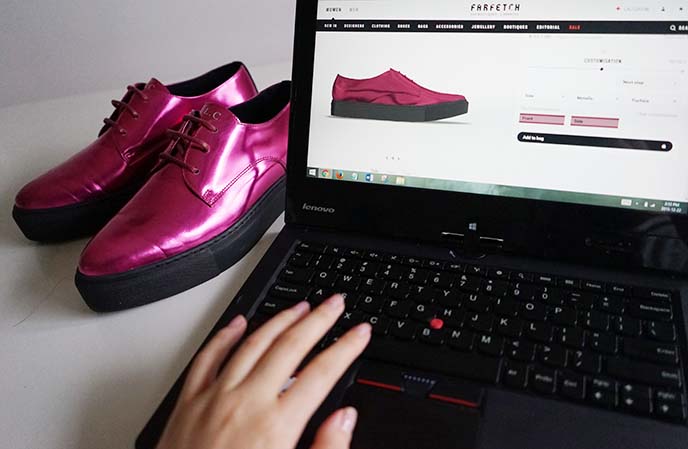
When you make a choice, the 3D image updates so you’ll know what the finished result will look like.

After you send in your design, the shoes are handmade in Portugal with the finest craftsmanship. The turnaround takes about 4-6 weeks, since every order is an original.

I’m so happy with how the MySwear Hoxton sneakers turned out! They’re one of a kind, and really make an outfit stand out.

The shoes are beautifully made, with artisan techniques and luxury finishes.

I enjoyed seeing how other creators let their personalities show, through their bespoke designs. You can see more examples on social media under the hashtags #farfetch and #farfetchfind.
I’m curious to know — how would you customize your own MySwear shoes?

Since we’re wrapping up 2015, I figured it was time to publish my last photos from Seoul, Korea (I went there last year, but never got around to sharing these).
I spent an afternoon in the Myeongdong shopping district, which is packed with Kpop shops. I also went to the dog themed cafe, where you can drink coffee and pet dozens of puppies!
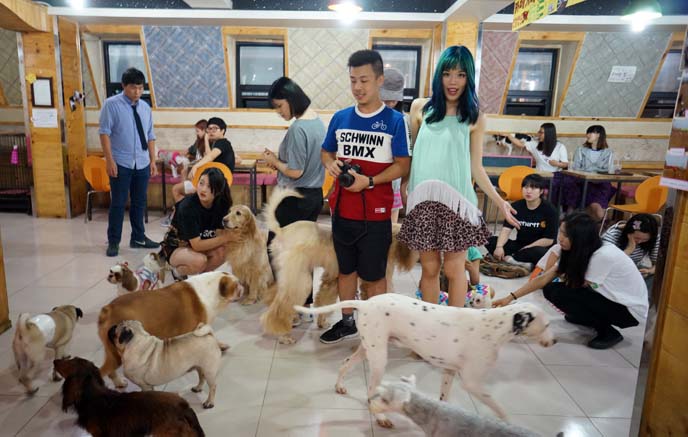
Seoul has a few “dog cafes” where you can enjoy the company of canines, of all breeds and sizes. How many can you count in this photo?
I planned on visiting the original dog cafe, Bau House, in Hongdae. However, it moved locations (Bau House is now found near Hapjeong Station — the address is Jeil Bldg. 1F, 394-44 Seogyo-dong, Mapo-gu, Seoul).
Instead, I wound up at Gaene, a dog-petting cafe in the busy district of Myeongdong. (Address: 22-2, Chungmuro 1-ga, Jung-gu, Seoul. Nearest station: Myeongdong or Euljiro)

I found myself in a room filled with dozens of adorable dogs! I went straight to the big white Great Pyrenees and gave him a hug.

Entrance at Gaene costs about 8000 won ($8 per person) and includes a drink, plus unlimited time to pet the pups. Before the staff sets you loose, you must sanitize your hands, and turn over any chocolate that you might be carrying (as it’s poison to both cats and dogs).
There’s a breed for everyone: terrier, bulldog, collie, Afghan hound. Non-flash photography and video are allowed, and many Korean girls took selfies with the animals.

I saw children sitting on the floor, with blankets provided by Cafe Gaene. They combed the lapdogs and arranged ribbons in their fur.

The cafe is extremely well maintained, with no lingering “dog smell.”
As you know, I’m a cat-mom but I love dogs too. It was fantastic to be able to play with so many breeds, in a single space.

All of the dogs were well-behaved, and seem healthy and happy. A few got into “barking matches” and scuffled on the floor, but for the most part, everyone seems to live together in harmony.

Seoul’s Cafe Gaene is a unique “only in Asia” experience, and good times for dog lovers of all ages.
(Note: Tokyo has a Deco dog cafe, but it’s a hangout for owners and their pets. You can’t just go and play with dogs, like at Gaene.)

Let’s end with a look at fashion in Seoul. All over the city, you can find stores selling hanbok: traditional silk and satin dresses, with tiers of rainbow colors.
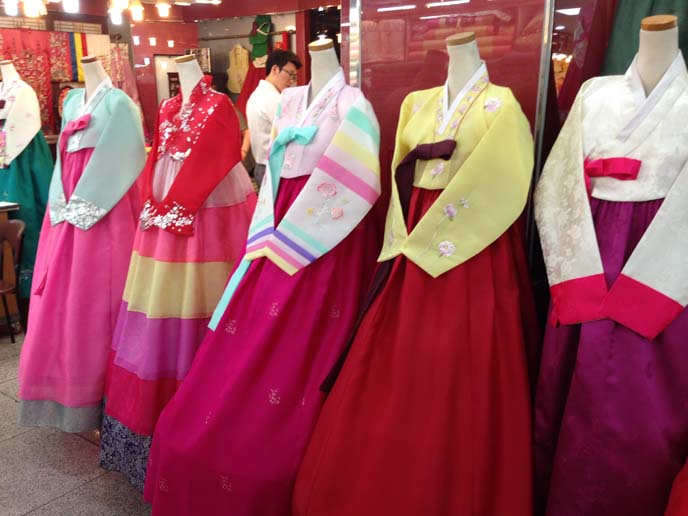
These doll-like hanbok are still striking, centuries after they were first designed. But if you’re looking for modern garments…
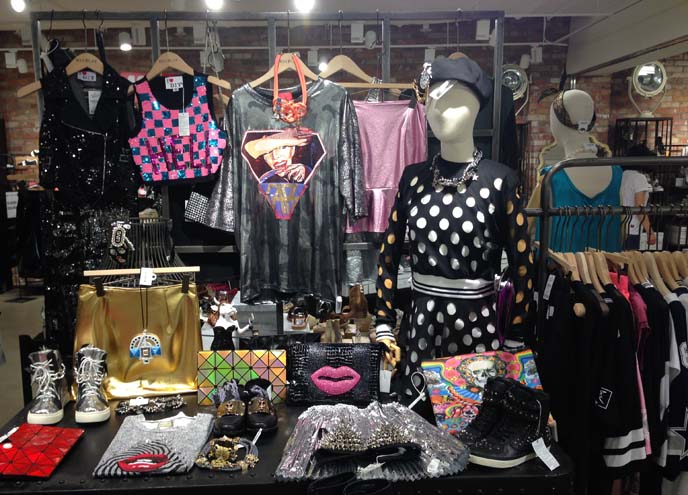
Myeongdong is the neighborhood for you. The streets are filled with bright Kpop and streetwear boutiques, in addition to big-name international brands.
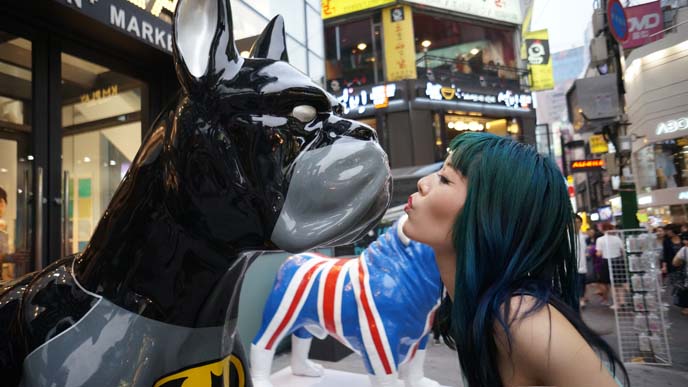
I said hello to a Batman-dog, outside the KM Play / K.Design+ mart.

These cheeky statues hint at the eccentric clothing and accessories inside.
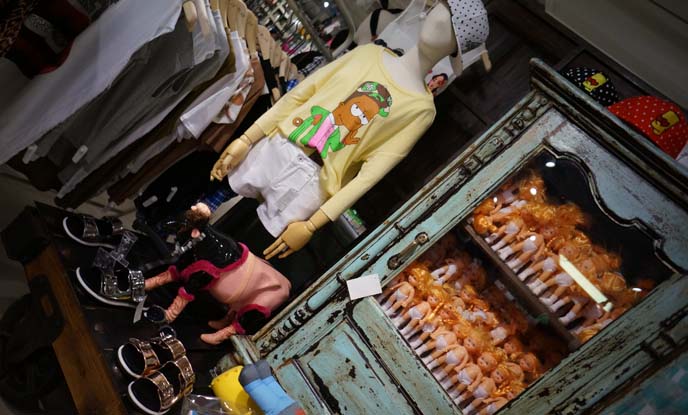
K-pop style has become popular worldwide now. One of the hottest places to get dressed is at KM Play. I saw Simpsons-print tops, studded ankle boots, oversized sporty shirts, glitter skirts and other K-idol favorites.
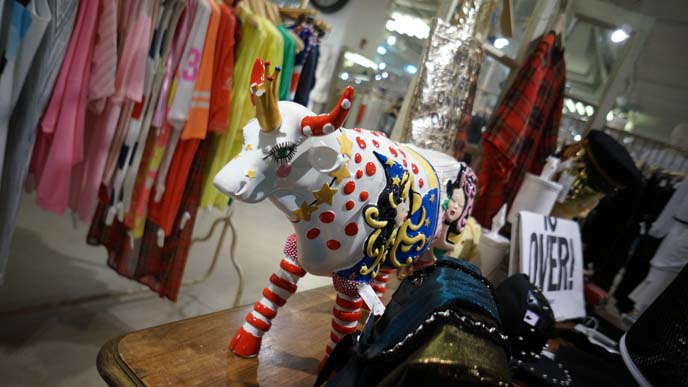
Both prices and quality are mid-range (about 30,000 won or $30 US for a top), and items are mostly unique to the store. Give yourself at least an hour to browse, since the racks seem to go on forever.
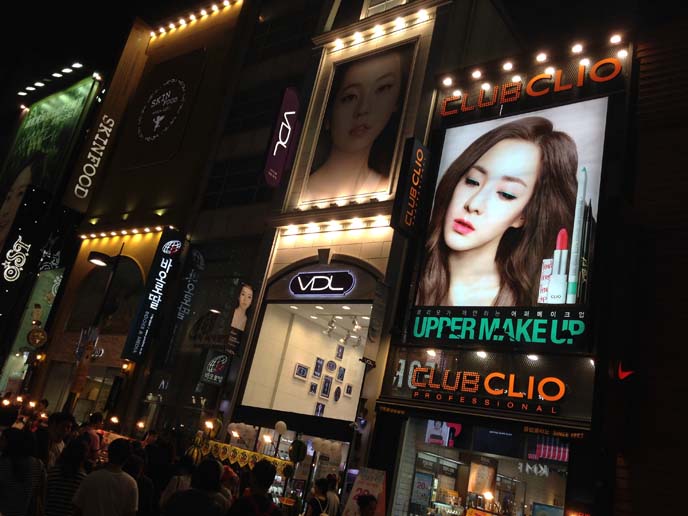
Myeongdong is also filled with Korean makeup and cosmetics shops, including the girly favorite Etude House. I saw big posters of Dara and Sohee, showing the Kpop beauty standard (white skin, flat eyebrows, slim face with a V-shaped jaw).
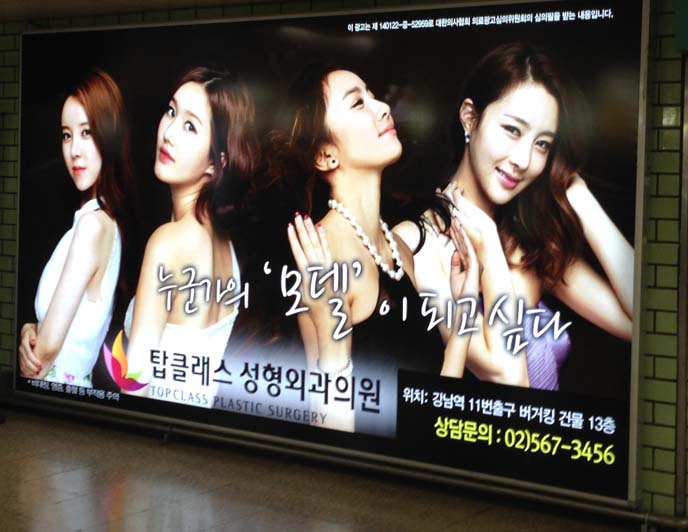
Speaking of plastic surgery — yes, it’s prevalent in Seoul, especially in districts like Myeongdong, Gangnam and Apgujeong (which has a whole street of clinics). Advertisements are everywhere, sometimes showing “before” and “after” faces.
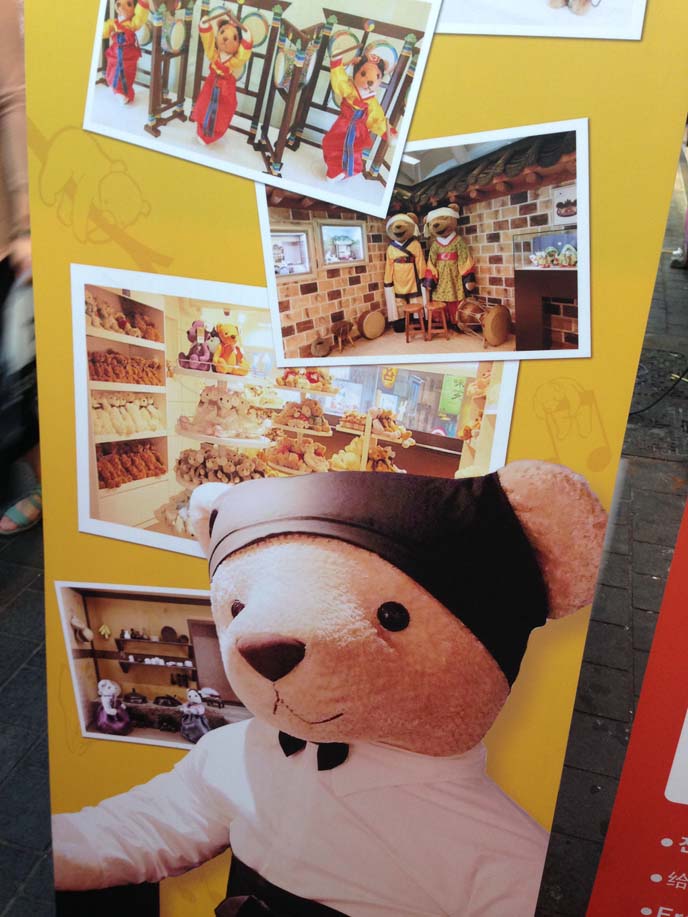
Hongdae remains the indie, artsy center — and my favorite district of Seoul.
However, I came across some quirky places in Myeongdong, like this Teteru Teddy Bear Museum.
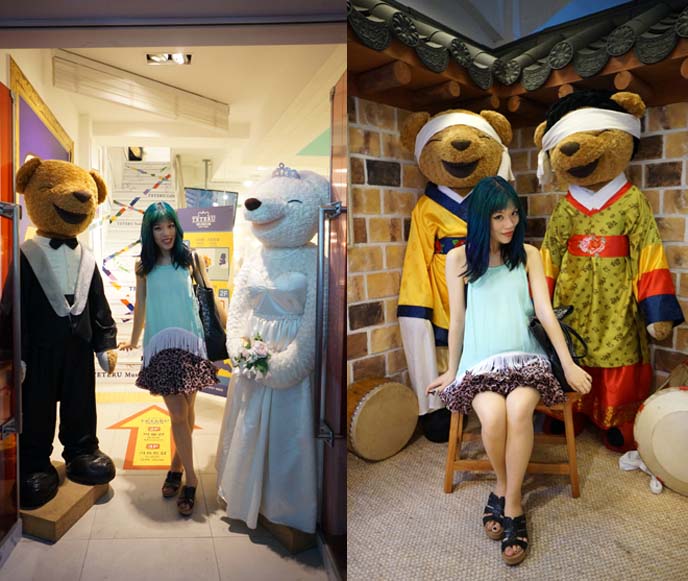
Anyone can go into the cafe and gift shop for free, and pose with the giant, laughing teddy bears. There’s a small charge if you want to see the full displays of Teteru bears in the museum.
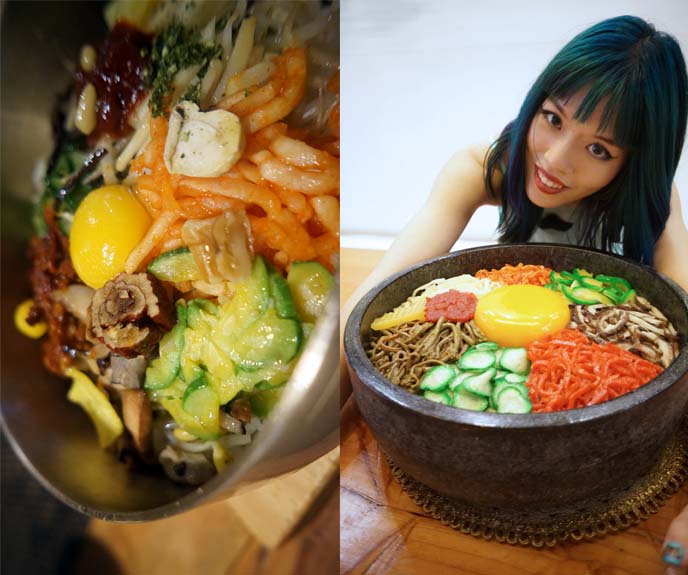
Another must-do: eat Jeonju bibimbap at Gogung. (Address: 37, Myeongdong 8ga-gil, Jung-gu, Seoul). This restaurant has been around since the early 1970s, doling out this delicious spicy dish — a big bowl of spices, veggies, egg and rice that you mix together. Gogung also has glass noodles, seafood pancakes and other Korean dishes. Now I’m craving it again…
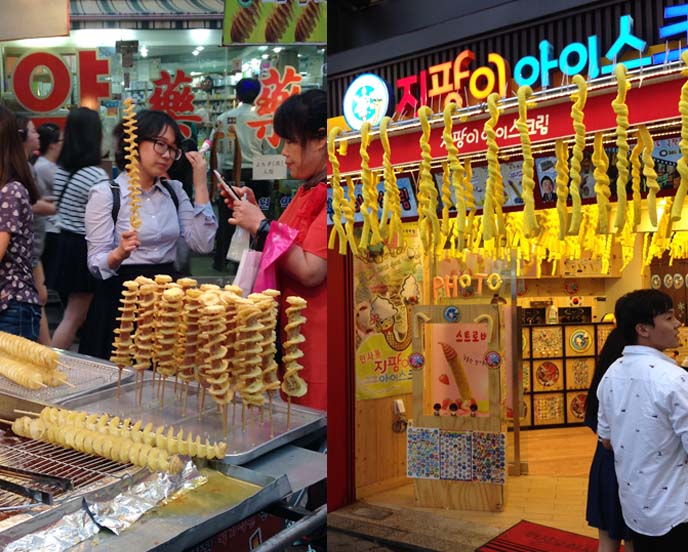
On the streets, you’ll find strange street food. Unlike in places like Thailand and China, I’m not talking about organ meats and bugs on a stick. Seoul will serve you deep-friend potato chips on a stick, and ice cream in a vaguely phallic cone with a double-opening.
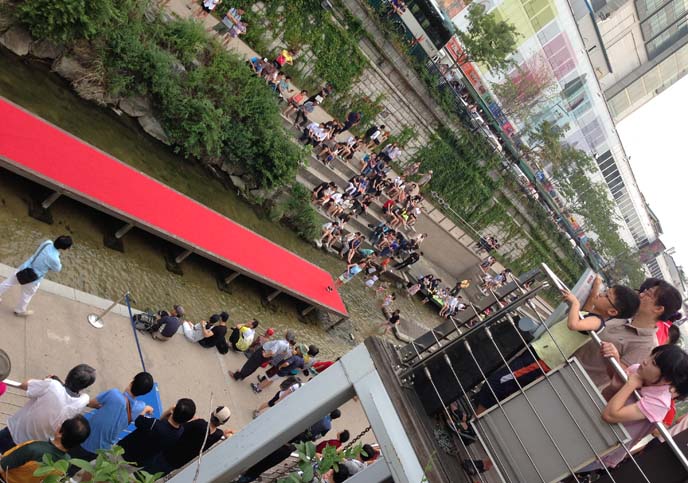
I leave you with a snap from a public fashion show at Cheonggyecheon. This is a 7-mile long open stream and urban space, where people stroll and hang out. Quite funny to see children playing in the waters, while models strut on the catwalk.

I hope these photos convey the pop culture energy of Seoul. Would you visit a dog cafe, or Korean makeup shops?

I think my MySwear derby shoes would fit right in with the Kpop fashion here!
PS: here are all my Seoul alternative travel tips, to help you plan a trip to Korea.
SHARE & COMMENT
Lisbon, Portugal travel guide: Modern art, fashion & food! LX Factory, hip neighborhoods.

I finally visited Lisbon, Portugal… and kicked myself for not doing so sooner! I loved the city so much that it’s now one of my top three favorites in all of Western Europe.
Portugal tends to be overlooked when people travel to Europe. (I’ve been guilty of skipping it over, in favor of places like Italy and Croatia).
Little did I know that Lisbon is exactly my type of travel experience: not expensive or touristy, lots of cool neighborhoods and street art, and top-notch food — including the best sardines I’ve eaten.
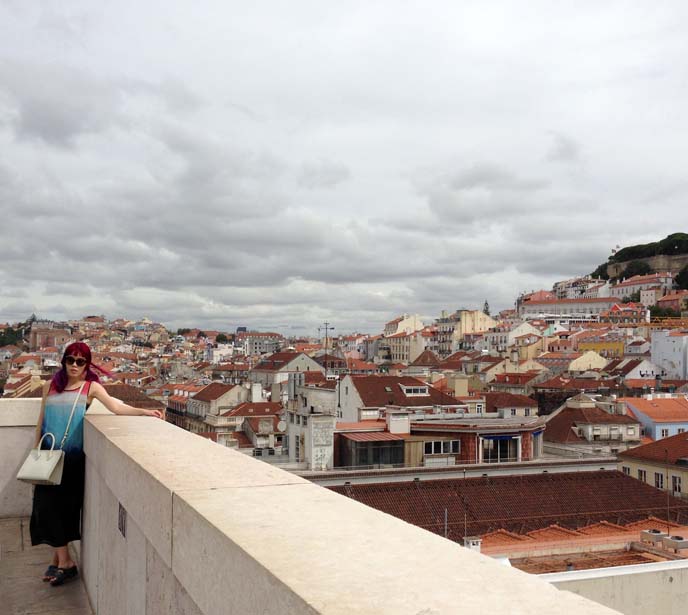
As always, I like to highlight the young, hip, alternative attractions in any city. Visit Lisbon helped us put together the perfectly-tailored itinerary, and supported us as we explored Lisboa for the first time.
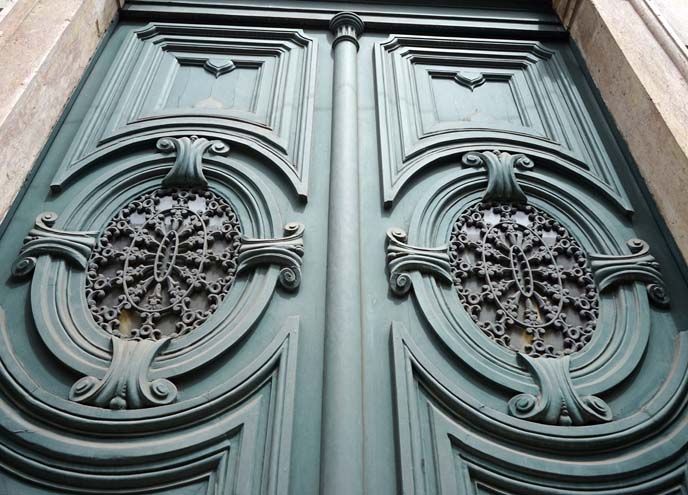
We asked them, “Why do travellers go to other countries ahead of Portugal, or treat it as an add-on leg?”
There’s no simple answer. Perhaps Lisbon lacks a world-famous landmark like the Eiffel Tower or Colosseum that tends to draw in tourists. Many are also unfamiliar with Portuguese culture, history, food and attractions.
All this is an advantage for travelers like us, who seek out alternative experiences. It was also a breeze to get to Portugal from Spain: we rode over on our Eurail train passes (which let us ride the rails in 28 European countries).
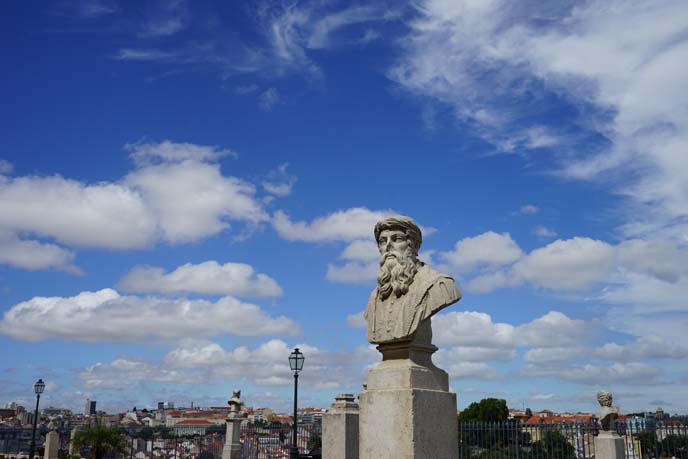
First impression: it’s so beautiful here. No filter needed, for these clear blue skies and fluffy white clouds.
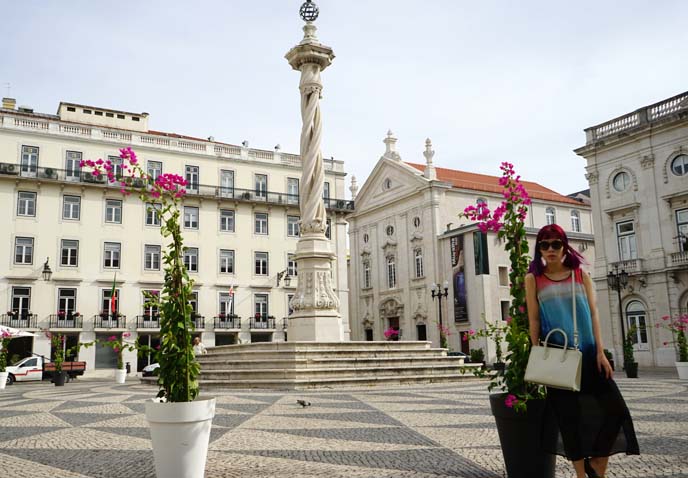
We couldn’t stop taking photos of the classic architecture. Municipio Square is one of the many pristine public courtyards we passed.
(I’m wearing a white tote purse by Strathberry of Scotland. The modern minimal style and luxury leather got a lot of compliments. My bag’s magnet closure, with an additional bar that goes over the handle, also keeps possessions safe while I’m traveling.)
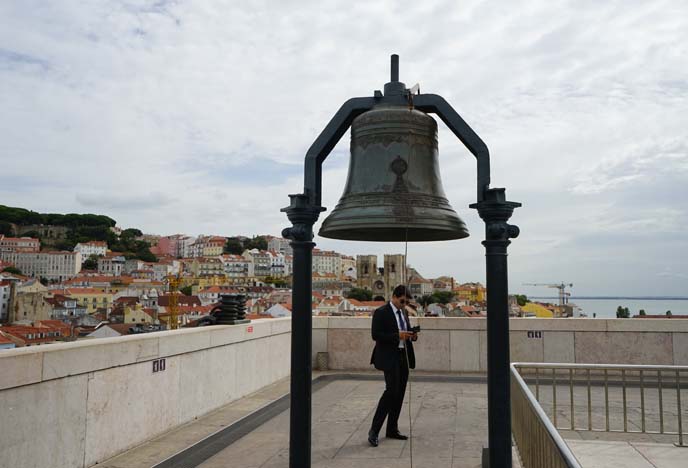
Everyone we met was so kind. Our driver and guide, Mario, acted as our bodyguard while we filmed on top of the Rua Augusta Arch (Arco Triunfal da Rua Augusta).
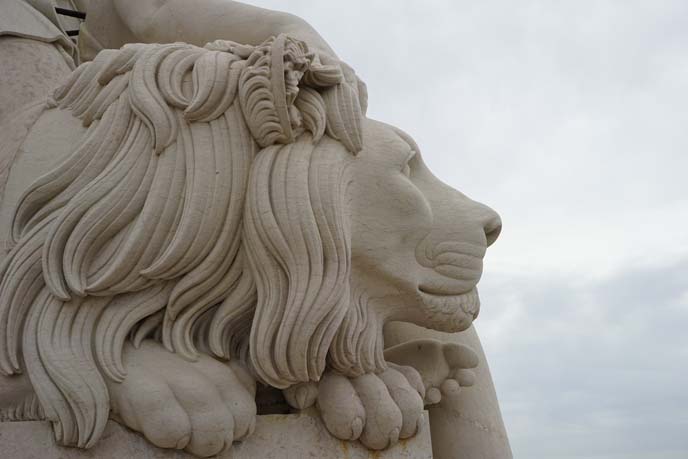
Located on the main Commerce Square, the triumphal arch commemorates the rebuilding of Lisbon after a devastating earthquake in 1755. At the top, a female statue of Glory spreads her arms, and a lion rests by her side.
(In a later post, I’ll show you how the Rua Augusta got lit up in a digital light projection!)
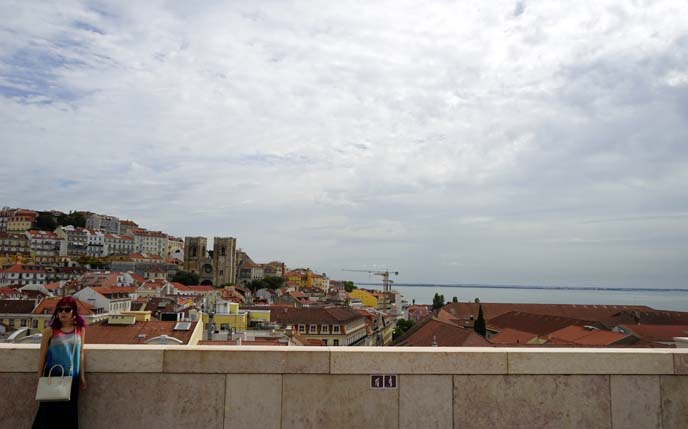
From up here, we could see the classic red rooftops and ocean under dramatic skies. Behind me is Lisbon Cathedral, the oldest church in the city.
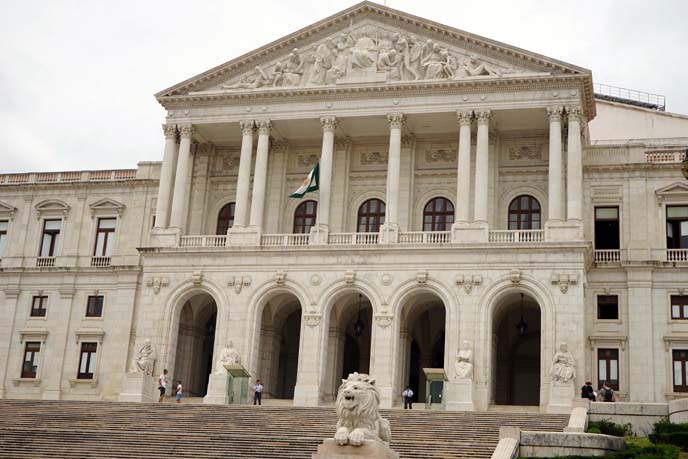
We ran into another lion at the Palácio de São Bento (St Benedict’s Palace), home of the Portuguese parliament.
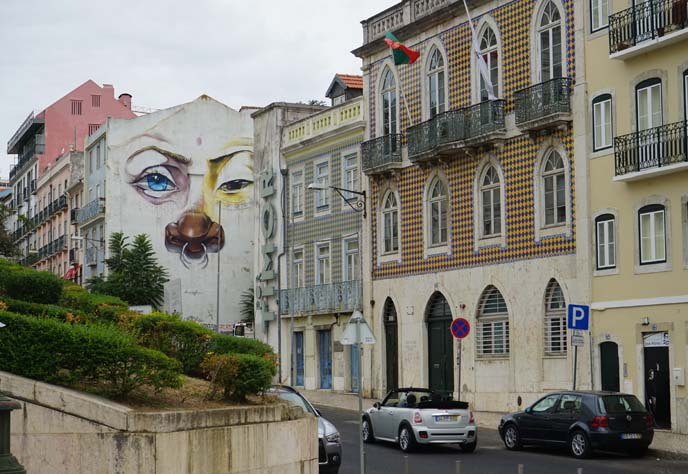
We were intrigued by the vivacious street art and murals, peeking out from behind 18th century buildings. There’s a sense of energy in Lisbon, and we were determined to see more of it.
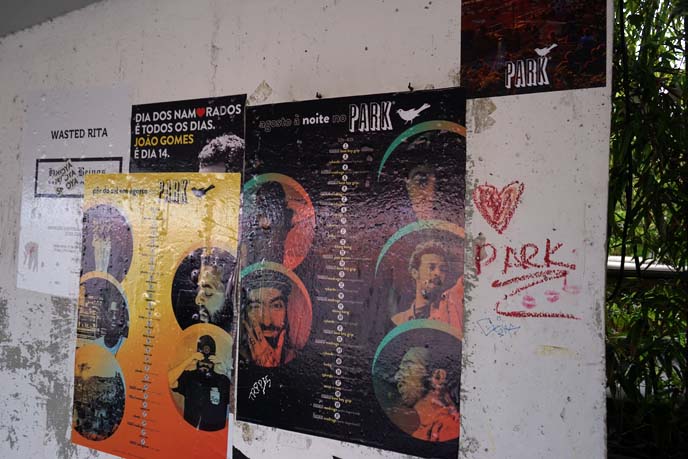
In the hip Bairro Alto district, we attempted to find Park restaurant — a secret hangout located in an unassuming car park! There are no signs advertising it, and the lot looks like a regular parkade. However if you ride the elevator up, and walk up another floor surrounded by graffiti, you’ll wind up in a hidden bar / cafe with outstanding views of Lisbon.
Park address: Calçada do Combro, 58 1200-115 Lisbon
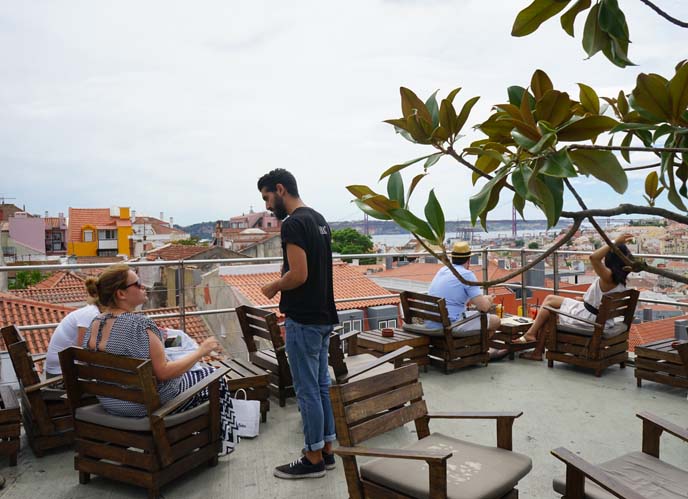
You can sit on the terrace with the hipster crowd, and take in this 180 degree scene of Lisbon from up high.
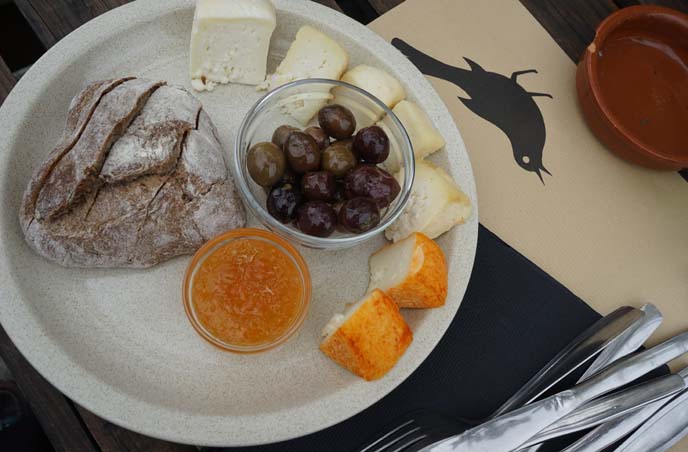
Tip: When traveling in Europe, eat your fill of soft cheese, local wines, and breads — since these are usually not imported out of the country. European bread also tends to be made with high quality grains that don’t cause trouble for people who regularly must eat gluten-free.
At Park, all of the above were extraordinary, and at lower prices than in neighboring countries. (Above — I’m still dreaming of this cheese plate with pumpkin jam…)
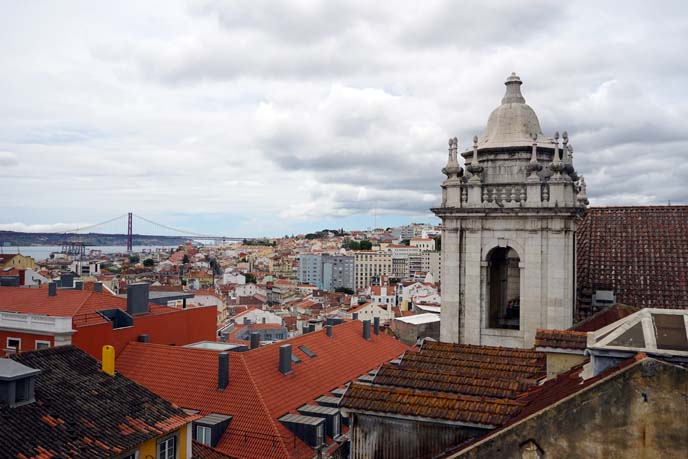
Lisbon felt a lot like San Francisco, with streetcars over rolling hills, brightly painted houses, and even a Golden Gate bridge!
This is actually the “25 de Abril Bridge” spanning the Tagus river. It’s named in honor of the Carnation Revolution, the 1974 peaceful civil resistance that overthrew the Estado Novo regime.

Lisbon’s artistic vibe followed us everywhere we went — even to our rooms at LX Boutique Hotel in Bairro Alto. The wall above my bed had a mural of Portuguese guitars, which are twelve-strings with a round body. These accompany the singers of Fado, the melancholic musical genre.
We were big fans of LX, a luxury boutique hotel with a lot of personal touches: including funky art displays, free egg tarts and Ginjinha cherry liqueur in the lobby, and a fusion sushi restaurant. (Book a room at LX, found at R. Alecrim 12, 1200-017 Lisboa, Portugal)
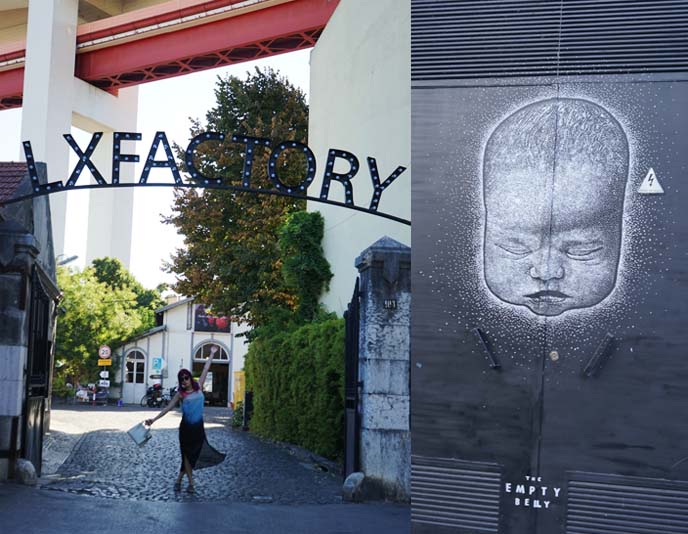
The same type of spirit is omnipresent at LX Factory, a former industrial corner that is now home to design shops, cute eateries, and creative studios.
(Address: Rua Rodrigues de Faria, 103, Alcântara, Lisbon)

In 1845, a fabric and thread factory opened up in this area on the outskirts of Lisbon (Alcantara). It became a manufacturing hub that was later abandoned.

Now, the space has been transformed into a playground for Portuguese artists. Many of the walls are covered in eye-catching modern works.
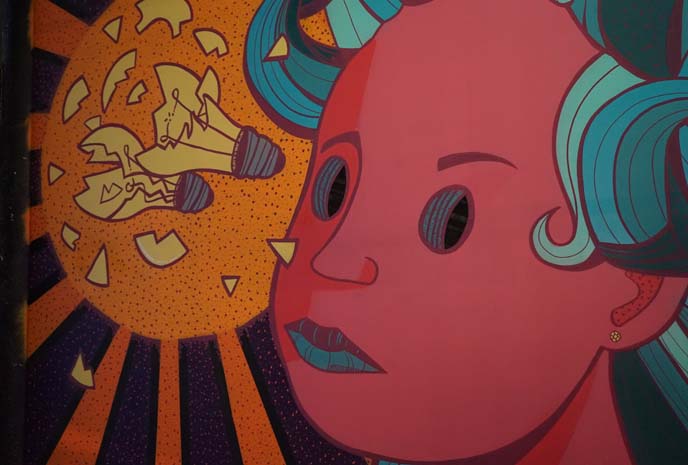
We ducked into the various art studios and interior design shops, including one that sold handmade furniture for kids. LX Factory also has restaurants with outdoor seating areas — our guide Mario recommend the sushi parlor.
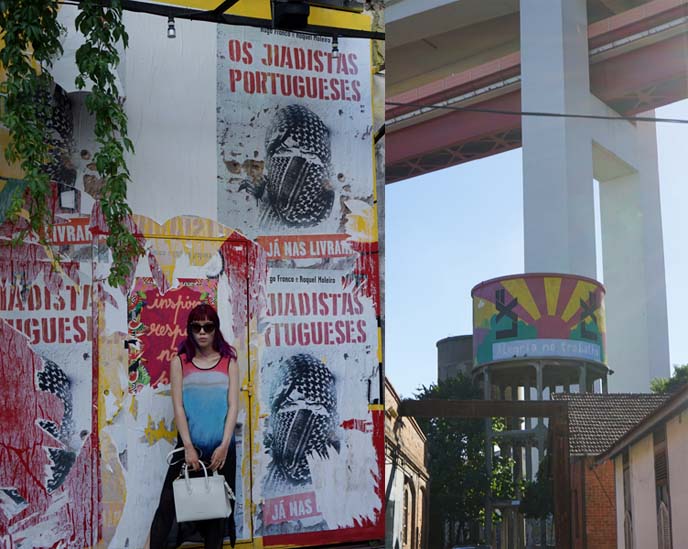
I enjoyed seeing how “ugly” old industrial structures were transformed into bright, edgy works of art.
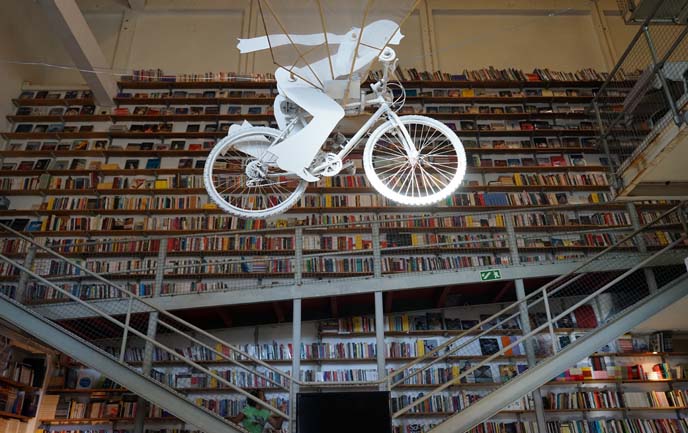
At Ler Devagar bookstore, I found novels and treatises in all languages. The big warehouse-like interior is my idea of book heaven.
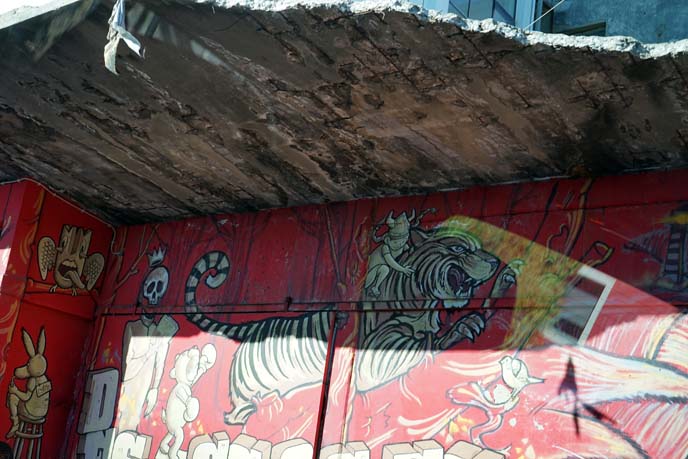
Can you spot the skull? LX Factory is packed with creativity, and I hope you’ll make the trip to see it.

What are some other hipster areas to explore? Bairro Alto, and Cais do Sodre. My team and I could have spent days browsing the artisan stores, such as a wax candle shop that looked like a cathedral. (Photos by Borderless Media)

Everyone knows about the joys of Italian and Spanish food… and we discovered that Portuguese cuisine is right up there. We loved the fresh seafood — there’s outstanding sushi here — and tasted a variety of local dishes at the Mercado da Ribeira market (I’ll show you in an upcoming post).
Some must-eats: the famous egg custard tarts, sushi / seafood, black rice…
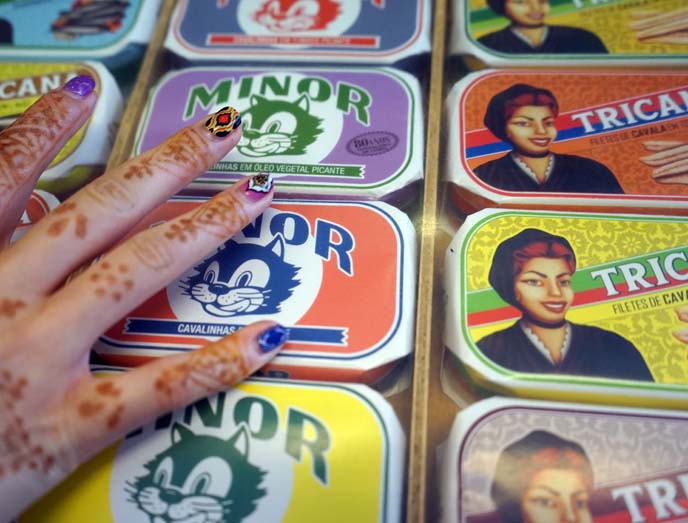
… and above all, sardines! These are essentially a food group for me — I eat these little fishies all the time at home, and they’re full of healthy oils and minerals.
You can imagine my excitement at visiting Lisbon sardine shops, and seeing rows of tins with cat-faces. One of the historic ones is Conserveira De Lisboa (Rua dos Bacalhoeiros 34).
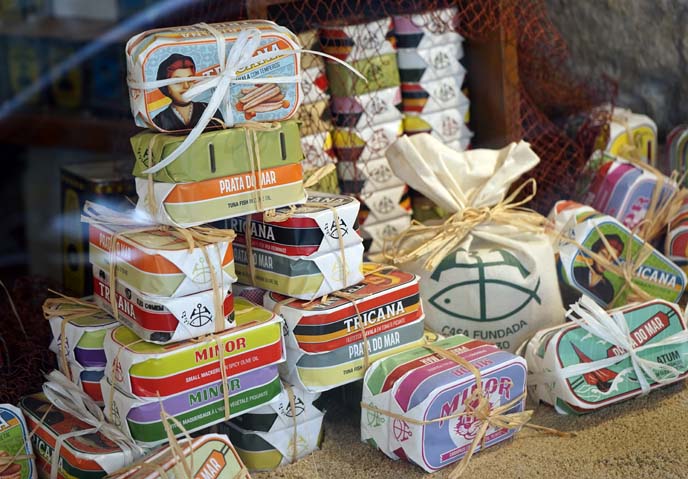
I bought so many sardines, in various rainbow packaging. The shops also sell other canned fish, such as mackerel.

Sardines are so famous in Portugal that they’re considered a national icon. Many souvenir shops had sardine products for sale.

Finally, fashion. At Embaixada LX, we found boutiques by indie Portuguese designers inside a centuries-old building. It’s wonderful how Europe can preserve and transform architecture in this way.
(Address: Praça do Príncipe Real 26, 1250-184 Lisboa, Portugal)

These concept stores sit inside a Moorish-style building built in 1857.

There’s a dramatic double staircase, an Arabic courtyard and stained glass windows.

The stores flowed into each other: toys, swimwear, home goods. All of the works are by local designers, and ranged from silky caftans to quirky lamps.

Embaixada shopping center is yet another example of Lisbon’s cool, quirky charm. Visiting the city was a breath of fresh air, and I wish I had come sooner to experience it.
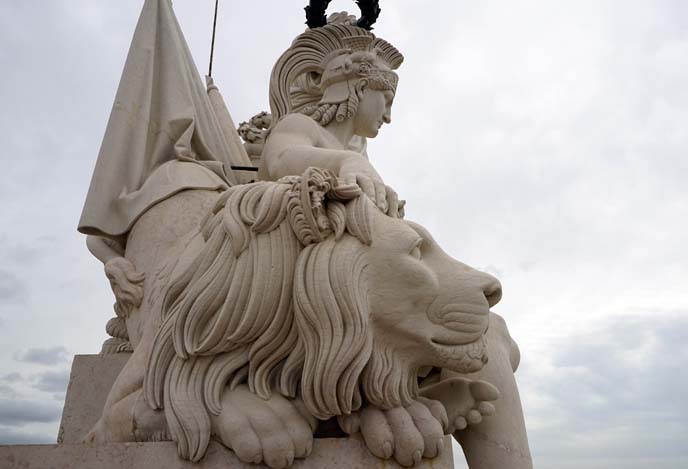
Obrigado to Eurail and Visit Lisbon for making our Portugal adventures possible. (We learned that the Japanese word for thank you, “arigato,” is derived from the Portuguese one!) For more architectural inspiration, check out these modern Japanese houses.
We stayed at LX Boutique Hotel and fully recommend it for its value, hip atmosphere and location.
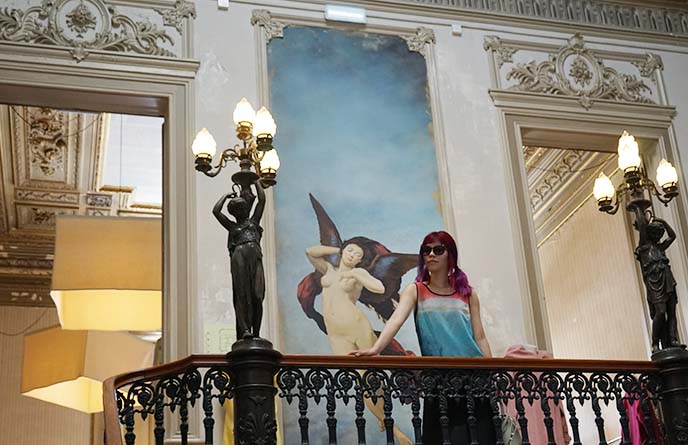
I hope this post opens your eyes to Lisbon, and that you’ll include the city in your itinerary when you come to Europe.
What do you think of the contemporary art, food and fashion found in Lisboa?
 LA CARMINA
LA CARMINA






